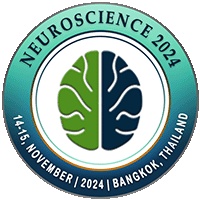
Tran Hoang
Monash University School of Medicine and Department of Neuroscience, AustraliaTitle: Structural connectivity of the claustrum-amygdala connection to the OFC suggests an underlying network related to anxiety
Abstract
Clinical anxiety, despite extensive study, continues to present challenges in pharmacotherapy, with limited advancements over the past century [1-2] .As evidenced by the modest progress following the introduction of the mainstay anxiolytics such as benzodiazepines which are known for their limited effectiveness and significant adverse effects [3]. Addressing this gap necessitates a paradigm shift, anchored in an intricate understanding of the underlying neuroscience. Our research targets a critical gap in current anxiety treatments by delineating a structural network hypothesized to underpin anxiety disorders, focusing on the claustrum. Through neuroanatomical tracer studies and diffusion-weighted imaging (DWI) tractography in marmosets, our results demonstrate reciprocal connections between the basolateral nucleus of the amygdala and the anterior claustrum. This finding is consistent with rodent models [4-6], suggesting cross-species similarities in anxiety-related circuitry. We pinpoint the claustrum's dorsal endopiriform nucleus as a critical connectivity hub, implicating it, along with the orbitofrontal cortex, in a defined non-random structural network. The functional relevance of these findings was explored using a mouse model where chronic sleep-fragmentation, a validated method for inducing anxiety-like symptoms, was employed. Behavioural assays established for their translational validity in human anxiety studies [7-8], such as the Elevated Plus Maze and Open Field Test, were utilized to confirm the activation of these circuits during anxiety-like states. Our multidisciplinary approach not only solidifies the claustrum's involvement in anxiety but also proposes this structure as a potential novel therapeutic target. This work lays the groundwork for future translational applications, with the potential to inform non-invasive diagnostic strategies and the development of targeted anxiolytic therapies. By bridging advanced imaging techniques and established behavioural assays, we advance the neurobiological understanding of anxiety and pave the way for significant clinical innovations.
Biography
Tran is pursuing an MD-PhD at Monash University School of Medicine and Department of Neuroscience, in a quest to become a clinician-neuroscientist to bridge the gap between medical practice and evidence-based research. Her academic journey began when she secured a highly competitive Commonwealth Supported Place in the prestigious undergraduate medical program at Monash University. She subsequently became one of just 4 students out of 500 medical students from her cohort to embark on the combined MD-PhD pathway. Combining her interest in brain network analysis and clinical medicine, Tran honed her interest into a PhD in the neural underpinning of anxiety with a focus of the claustrum’s role as potential novel therapeutic target. As Student Ambassador for the Medicine, Nursing and Health Sciences Faculty at Monash University, and serving as the Academic Representative for her medical student cohort, Tran is dedicated to academic advocacy and sparking interest in the clinician-scientist pathway.

